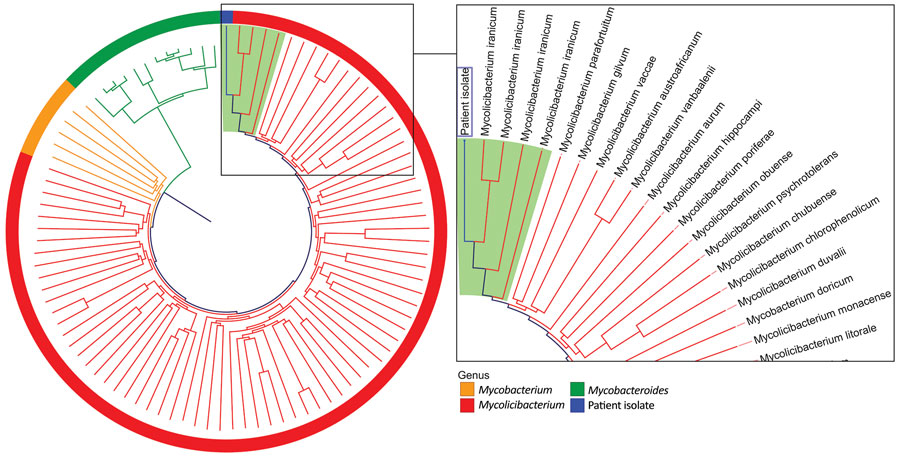Volume 29, Number 1—January 2023
Research Letter
Catheter-Related Bloodstream Infection Caused by Mycolicibacterium iranicum, California, USA
Figure

Figure. Phylogenetic tree of an isolate from a 76-year old woman in California, USA (blue box), compared with a selection of relevant members of the family Mycobacteriaceae in a case study of catheter-related bloodstream infection caused by Mycolicibacterium iranicum. Relatedness was determined by k-mer analysis. Reference genomes were from 4 Mycolicibacterium iranicum isolates, 74 other Mycolicibacterium spp., 12 Mycobacteroides abscessus isolates, and 6 clinically relevant slow-growing Mycobacterium spp. Light green background indicates M. iranicum isolates. The clinical isolate in this case study was clustered most closely with all 4 M. iranicum genomes. Tree is not scale and is designed to show clustering.
Page created: October 27, 2022
Page updated: December 22, 2022
Page reviewed: December 22, 2022
The conclusions, findings, and opinions expressed by authors contributing to this journal do not necessarily reflect the official position of the U.S. Department of Health and Human Services, the Public Health Service, the Centers for Disease Control and Prevention, or the authors' affiliated institutions. Use of trade names is for identification only and does not imply endorsement by any of the groups named above.